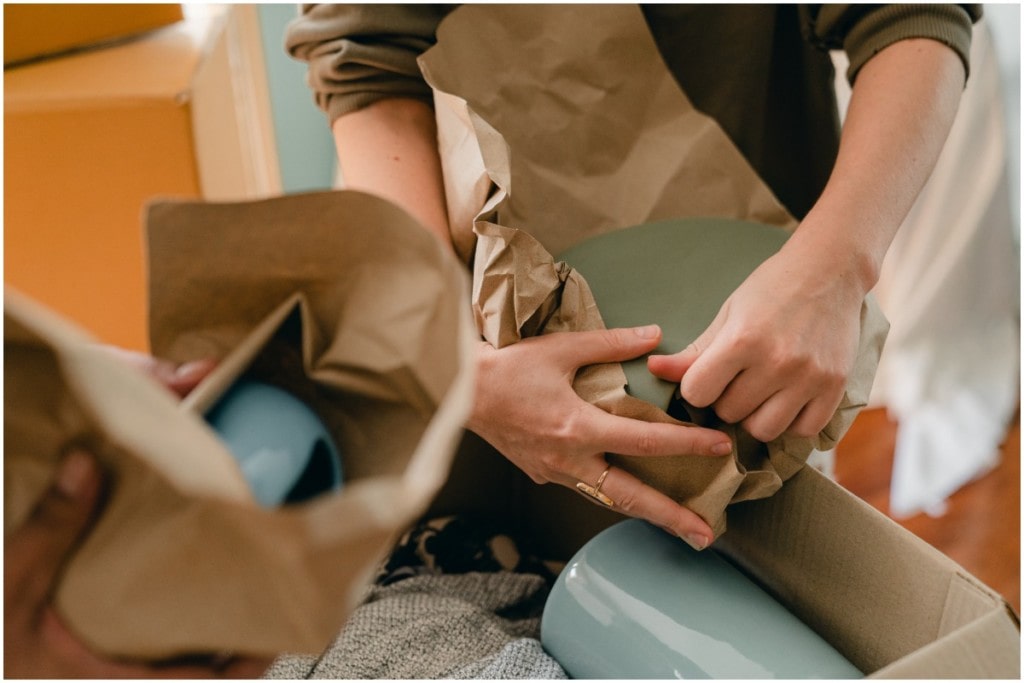
Whether you’ve secured the perfect apartment to rent or just purchased your dream home, the only task left is transitioning into your new living space. We won’t lie to you — moving is no small feat. The entire process can feel daunting, from decluttering and packing to transporting your belongings and perhaps enticing your friends to assist. The reassuring news is that it doesn’t have to be overwhelming. Strategic planning and organization in advance can significantly alleviate the stress on moving days.
This is where a moving checklist comes in. Knowing when to do things – and in what order to do them – will put your mind at ease when details of the move begin to stress you out. So whether you’re just moving across the street or across the country, use this Redfin moving checklist, that’s jam packed with tips from moving experts, to help you every step of the way.

Two Months in Advance
Forward medical records and transfer prescriptions. For long-distance and cross-country moves, you will need to find a new doctor and pharmacy. Talk to your current providers and ask that your medical records and prescriptions be forwarded.
Examine the floor plan of your new home. If you want to be happy with the décor in your new home, you need to know the layout. Now is the time to examine blueprints and measure furniture so you can visualize where everything will live in the new home.
Schedule painting and repairs. If you need to paint or make any improvements to your new home, make arrangements before your belongings are moved in. Scheduling the job(s) ahead of time will help you avoid stress later.
Request vacation. You will likely need time off for the move, so ask your boss now, before life gets hectic.
Complete change of address forms. Make sure to fill in the change of address forms and give your new address to friends and relatives.
Budget the costs. Depending on how far you are moving and how many items you have, a move can cost anywhere from a few hundred to thousands of dollars. You can save money by sourcing your own moving supplies like boxes, rope, and protective materials.
Cassie Long with Horizon Realty suggests a budget that factors “moving expenses, travel, movers, and move-out cleaners.”
One Month in Advance
Take inventory. You will want to keep track of your stuff, so make a list of your possessions. If you prefer visuals, you can take photos on your phone or camera to help you remember.
Downsize and declutter. Hold that pre-moving yard sale, or take your stuff to the local Goodwill. Donate non-perishable food items to the food bank.
Eric Lee with Badger Brothers Moving shares how “decluttering your home can make transportation easier and potentially lower moving costs.” Lee suggests looking over items such as furniture and clothes and deciding if there are things that can be parted with.
When it comes to decluttering, Nick Gauthier with Dans Moving Van adds how this can “ease the transition” from one home to another. Additionally, Nick recommends allocating plenty of time to the task to keep your move stress-free.
Shop for a great moving company. The right mover can make all the difference. So, compare and contrast moving quotes until you find the best fit.
Jyre Richardson with From Here to There recommends “getting at least three quotes from moving companies.” In addition to comparing pricing, Jyre suggests checking out reviews and “listening to your gut regarding perception.”
Gather your documents. From insurance policies to appliance manuals, make sure you have all the documentation you need in your new home. Keep those documents in a safe place, and take them with you on moving day.
Start packing. If you have not already done so, gather empty boxes and start packing up possessions. Start with infrequently used items and continue packing in the weeks leading up to moving day.
With Firemen On The Move, Evan Henderson suggests “buying boxes in bulk and trying to get all the same sizes.” He shares how “they stack better and more efficiently than different-sized free ones that you may acquire.”
Jorge Pederson with Metro Movers says to make sure every box is “closed and sealed shut” and use correct-sized boxes that aren’t overpacked or have empty spaces to ensure they arrive at their destination undamaged.

Two Weeks in Advance
Continue packing and labeling. Pack as much as you can, leaving out only the items you use every day. Label each box with the room it is intended for and a list of contents.
Should you find some items that do not have a home within a box, Wolf Pack Moving suggests placing those in their own box. Additionally, their team recommends labeling the boxes with their respective rooms to help avoid any confusion the movers may have when unloading into your new home.
For those who still have their television boxes, Patrick Meister with A1 Movers recommends packing your TV into its original box. If you don’t have the original box, be sure to purchase specific TV boxes or inform your movers if you need any before their arrival.
Hire a dumpster or schedule disposal. Moving out can generate lots of trash, so make sure you are covered. Contact your local trash hauler and arrange for a special pickup. You may also want to rent a dumpster if you have lots to dispose of.
Arrange parking for the moving truck. Moving vans take up a lot of space, so make sure the driver will have a secure place to park on moving day.
The Week of Moving Checklist
Cats and dogs. When moving with pets, make sure they have a safe place to stay on moving day. Leaving pets with the local kennel or a trusted friend will also reduce moving anxiety and help you breathe easier.
Confirm everything. This is one of the most important steps in the moving checklist. No matter how many times you have confirmed your moving day plans, one more confirmation won’t hurt. Knowing everything is in its place will ease moving anxiety and cause less stress.
In addition to confirming your moving day, SCV Moving Company reminds you to confirm the moving time. Their team shares that when scheduling the time, “consider off-peak hours to avoid busy streets and narrow roads.”
Pack a box with essential items. You likely won’t unpack every box by the first night of move-in. So you’ll want to pack a box of essentials such as snacks, a change of clothes, a toothbrush, clean sheets, shampoo, and a towel. Label this as your “First Night” box.
Clean your old space. Don’t pack your vacuum and mop just yet — remember to clean your freshly vacated space. Or better yet, hire a professional cleaning service to clean out your old space for you.
A Touch Above cleaning service states, “You’ll need to ensure the home you’re moving out of is ready for the next tenant or homeowner.” Therefore, they recommend checking that places such as “closets, cabinetry, and appliances are up to standards.”
Alisha Cyr, owner of Cyr Green Cleaning, shares how “professional technicians can significantly ease the burden of having to clean.” She adds that by having cleaners focus on “every nook and cranny,” you can “focus on other aspects of your move.”
Defrost freezers and refrigerators. Once the fridge is empty, defrost those appliances. Make sure appliances are clean and in good condition before leaving for your new home.
The Day of Moving Checklist
Meet the moving team. Greet the movers and make sure that all workers are part of the moving company you hired. Be sure the moving truck’s U.S. Department of Transportation license number is the same as the number on your estimate.
Supervise the load-in. Assign a family member or helper to watch the moving crew as they stack your belongings inside the truck. Be sure to keep an eye out for any damage.
Keep valuables with you. Make sure the movers don’t mistakenly load boxes containing your laptop, jewelry, passports, and any other valuables. These should be kept near you at all times.
Take a final walk-through of your current home. Check whether all windows and doors are closed and locked up and that electricity, water, and gas supplies are switched off before you leave for good.
Take inventory of moved items. Once everything has been moved into your new home, note any items that were damaged. Be sure to immediately inform your moving and insurance companies.
Settle in at your new home. Congratulations, you’ve made it to the final step in the moving checklist. It’s been a long 2-month process of moving out and in, and you’ve finally made it into your new home. Enjoy!
Rachel Sabo with Allen Edwin Homes suggests “embracing the opportunity to familiarize yourself with the surrounding conscientiously.” She adds, “Explore nearby amenities and acquaint yourself with the community, fostering a sense of connection and belonging in your new environment.”
The post Moving Checklist: Everything You Need to Know for a Smooth Move appeared first on Redfin | Real Estate Tips for Home Buying, Selling & More.
from Redfin | Real Estate Tips for Home Buying, Selling & More https://ift.tt/uJE0TSk



No comments:
Post a Comment